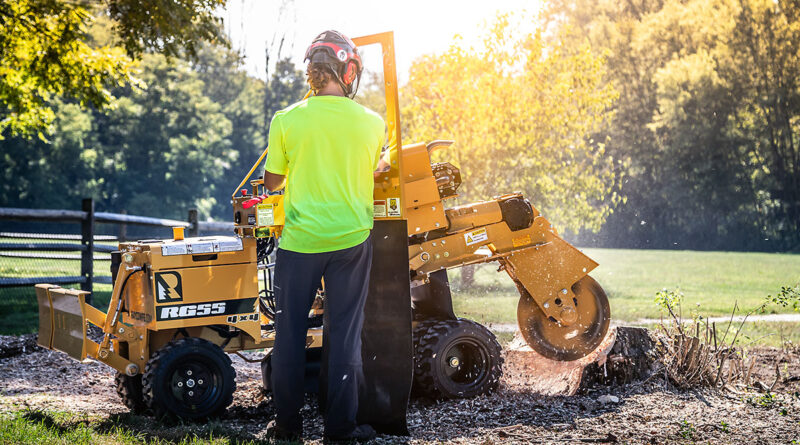Stump Grinders: An Incredible Asset for Tree Care Companies of All Sizes
Este es nuestro intento de convertir las historias en audio español usando Inteligencia Artificial. Aún así le recomendamos que reconfirme ciertas palabras clave y temas. ArborTIMES no garantiza ni se responsabiliza de la conversión del inglés al español de los relatos.
_
Stump removal is a natural part of any arborist’s or landscaper’s work, but removing stumps can be an arduous and unpredictable practice. Jason Morey, marketing manager for Bandit Industries, Inc. says, “In most circumstances, a stump grinder is the best solution for stump removal. Removing a stump with a stump grinder will create less damage to the terrain, simplifying the clean-up process.”
No matter the size of the stump, an intricate root system can create issues during any removal process. Removing the entire stump can also create an ugly hole that can be difficult and expensive to fill in.
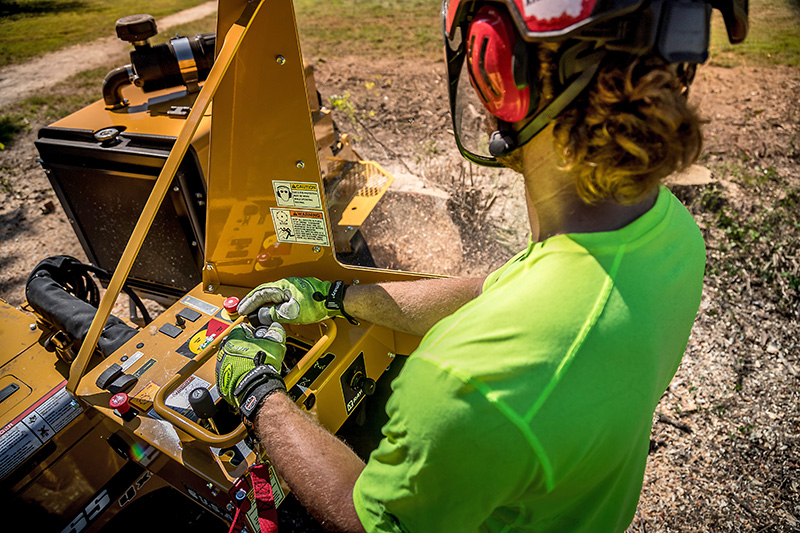
Stump grinding, on the other hand, has much less impact on the land. In fact, the resulting stump debris can be used to fill in the area, along with soil and any type of seeding. This can save your customers money, lessen environmental impacts and free up time to pursue more business. While there are situations where roots will push a small growth off of the remaining stump, the tree itself never grows back. These occasional growths can be easily eliminated by cutting them back as soon as possible.
Because of the wide variety of stump grinders out there, buying one for your business can feel daunting. No one wants to casually invest thousands of dollars into a machine without taking several factors into account. These can include the size of one’s business, machine capability, maintenance costs, and the ability to contract the work out or rent equipment as needed. Should you invest in a stump grinder?
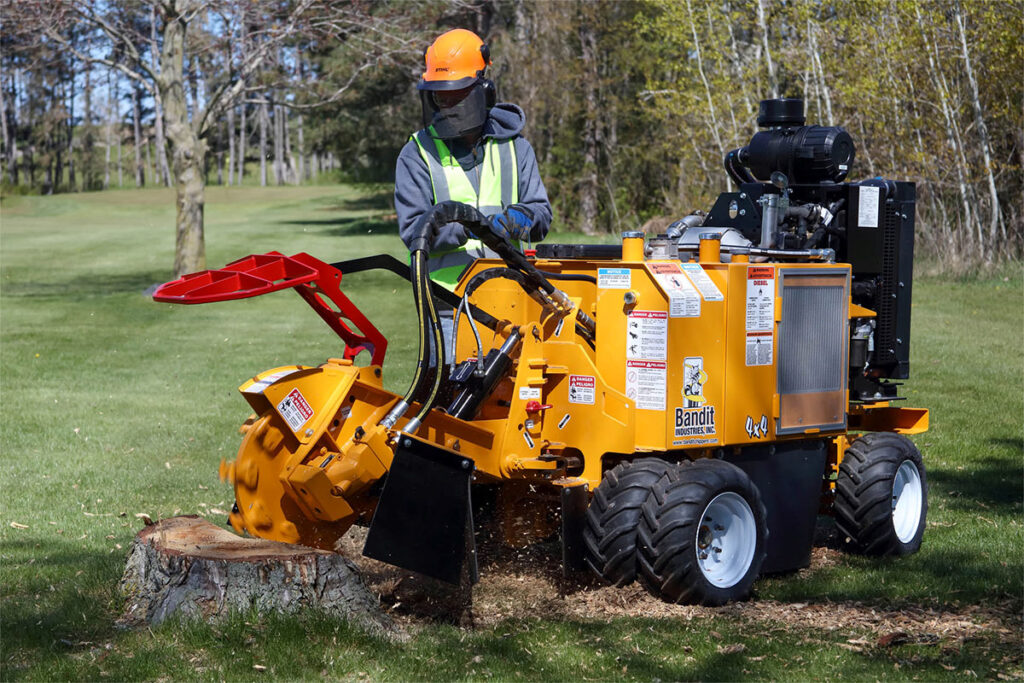
“Any company specializing in tree care should have a stump grinder in their fleet,” says Morey. “The need to remove stumps is always at a constant demand, and those companies that have the capabilities to offer this service will increase their profitability.”
Whether you’re a solopreneur starting a business or the owner of a large-scale operation, you’ve likely considered whether or not to invest in a stump grinder (also known as a stump cutter). Outsourcing the use of a stump grinder can be problematic for mid-sized to large companies and unaffordable for small companies. Additionally, relying on outsourced labor leaves businesses vulnerable to someone else’s availability. Days of work and pay can be lost waiting for a contractor to become available. Any large business would want to eliminate this kind of financial vulnerability.

Stump grinders come in varied sizes, from something as small as a standard lawn mower to as large as a bulldozer. Larger companies that regularly take down big trees will need to size their stump grinders accordingly.
“Industry research on the tree trimming service industry shows that stump grinding is still considered a niche. Those looking to set themselves apart from the competition could benefit from adding the service,” says Kaitlyn Ingli, product marketing manager for The Toro Company. “Stump grinding equipment is typically less expensive than what’s needed for full tree removal. Since you’ll only be focused on grinding the stump down and not worrying about the root system, the job itself will be quicker and more efficient, meaning you can fit more work into your day and make more money.”

Mike Hernandez, a salesperson for Vermeer All Roads, elaborates: “Affordability is a part of it. Like anything else we have today, it’s not a cheap toy. There are some grinders out there that are over $100,000. Obviously, a new company starting out is investing in something much cheaper that will be much smaller and much less effective than a larger stump grinder.”

If you’re ready to invest in a stump grinder, you must consider your options as far as size, capabilities and the needs of your company and customers are concerned.
For small businesses
The less expensive and more transportable stump grinders are a perfect choice for solopreneurs and small businesses. Anyone can start a strong side hustle with their own stump grinder.
The smaller machines are relatively easy to handle and have extensive safety features. Buying one “is a great way to be your own boss, spend time outside and make money at a pace you enjoy,” says Hernandez, who has noticed more nurses, teachers, retirees and firefighters using stump grinders to make extra money.
Already have your own company? Hernandez suggests buying a mid-sized stump grinder instead. This allows you to partner with local tree care companies who may not want to purchase their own stump grinders. Mid-sized stump grinders have a larger spinning wheel, which means they can handle bigger stumps. But another advantage to mid-size machines is their speed. Smaller grinders take longer to process stumps, while a larger machine can cut your time in half. This is especially important if you are taking on multiple jobs or charging by the stump.
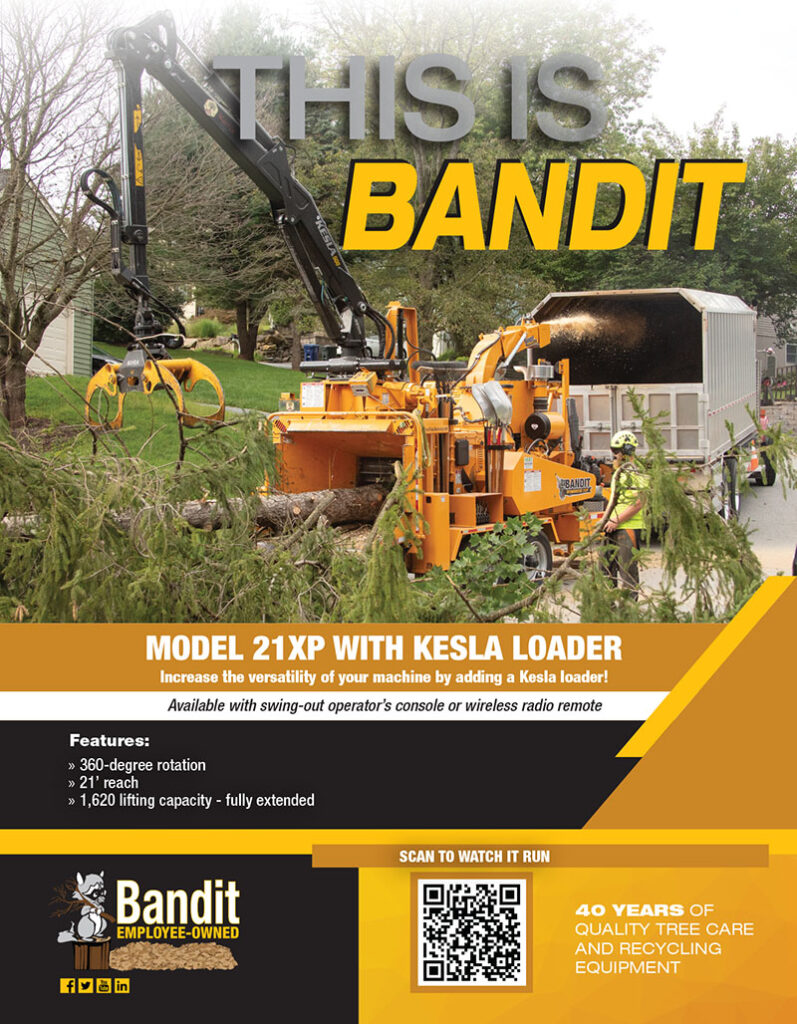
Additionally, the smaller models won’t be able to tackle stumps larger than 20 inches. Luckily, as Hernandez points out, small-scale operations can develop relationships with local rental companies to provide a backup option for larger jobs if needed.
For large businesses
Many large-scale tree companies can benefit from purchasing a stump grinder.
“Doing a lot of crane work and maybe taking down 60-inch or 80-inch trees, a smaller stump grinder may work, but it will take them three days to do one stump,” says Lou Hicks, regional sales manager for Morbark, LLC, owner of the Rayco brand. “If they buy a bigger machine, they could take out a huge stump in an hour. Using a smaller stump grinder means they aren’t working as efficiently.” This, he says, can translate into less financial gains in the long run.
Owning a stump grinder can also benefit large companies “because they can include the cost of stump grinding in their bidding price,” says Hernandez. Putting together a quote can involve several trips to the proposed work site, and “if you are waiting on a subcontractor to complete the work that you’ve got all of these resources tied up in, that could be a week, a month. That’s a lot of money to leave out on the line.” Machine ownership reduces the number of variables and guarantees availability, which can reduce the amount of stress on a business owner.

Which style is best for your business?
According to Ingli, “MAPS” is a simple acronym that sums up the factors to consider when choosing the right stump grinder to meet your needs:
•Maintenance required
•Access to the site
•Performance restraints
•Size of the job
Stump grinders are powered in one of three ways: direct drive, hydrostatic, and drive belt. Direct drive is the superior choice, according to Hernandez, who encourages customers to “buy the most capable model that you can afford.” Hydrostatic machines can be more maneuverable, and drive belt-powered systems are perfect for smaller jobs as they require a more delicate operation and are more prone to belt breakage.
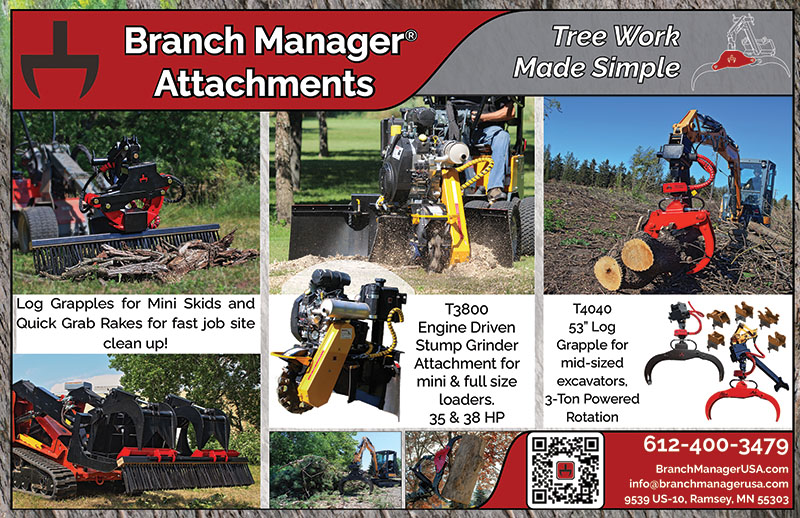
All three machine types require regular maintenance. Hernandez encourages owners to thoughtfully train employees to operate stump grinders and to perform regular maintenance tasks, such as replacing parts and topping off fluids. While these machines are capable of big jobs, they also require educated handling.
“It doesn’t have to be intimidating or scary,” Hernandez says. “They are as safe as they possibly can be, with features such as operator-present switches to minimize user error.”
Other things to consider when making a purchase are terrain, topography and typical stump size. A company based in rocky, hilly terrain with typically large stumps will require a much different machine than one based in flat, sandy terrain with medium to small stump sizes.

Maneuverability and ability to work on hillsides are also important factors to consider. An urban company would likely prioritize maneuverability over size because of the need to navigate obstacles such as gates and stairs. A suburban or rural-based company, on the other hand, may not have to manage these factors and can therefore choose a larger, less maneuverable machine.
Is maintenance expensive?
Purchasing from a local dealer is ideal. Vermeer, for instance, offers an asset protection program with a service plan that can be built into the full cost of the machine’s financing. Each service interval comes with a full inspection.
For such powerful machines, maintenance is fairly accessible for owners and operators. Each machine’s manual will list signs of wear and tear, instructions on how to replace fluids and manage lubrication, and identify parts that will need regular replacing.
Cutter wheels differ depending on the model. Some models have a one-piece tooth that needs to be wholly replaced when dull. Others have tooth-in-pocket systems that can be replaced individually. Your local dealer can provide reference materials beyond the manual if needed.
“You can definitely do your own maintenance on a stump grinder,” says Hicks. “If you grease your bearings regularly, they’re going to last a lot longer. But if you don’t change your teeth when needed, which is also considered maintenance, then you’re beating up your machine, and things will fail and break.” Machines can last decades when they’re cared for properly, which can save money and time in the long run.
Ingli agrees, “Compared to other equipment some tree care companies may use, stump grinders are an easy machine to maintain. But checking often and regularly can keep your machine running for a long time.”
About the author
Anastasia Selby is a former hotshot and wildland firefighter. Their nonfiction narrative book “HOTSHOT” is forthcoming from Grove Atlantic in early 2024. They graduated with a master’s of fine arts degree in creative writing, fiction, from Syracuse University in 2018 and are a Ph.D. candidate in creative writing (nonfiction) at Florida State University.


